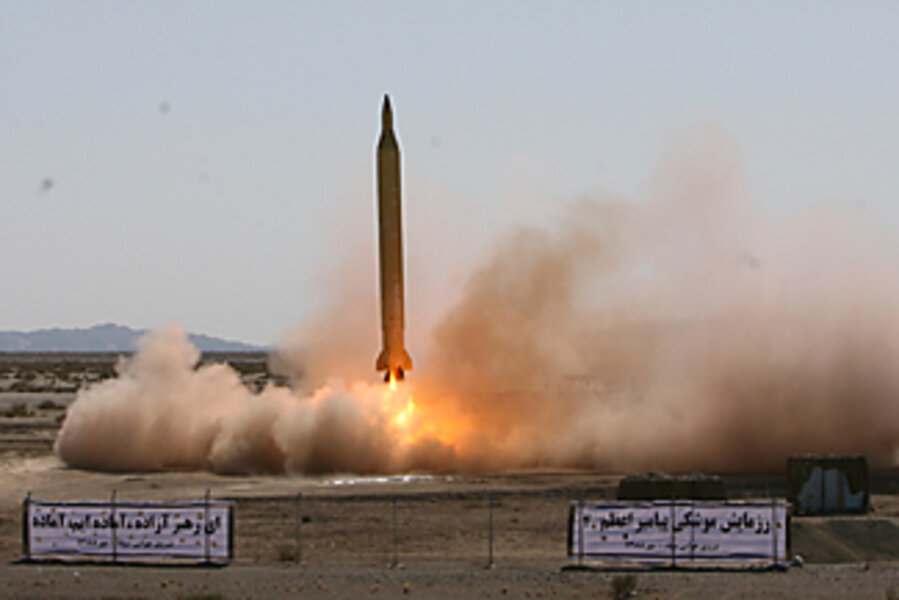Iran missile tests: What they tell the West
Loading...
| Washington
Iran's test Monday of its Shahab-3 and Sajil missiles has given the country a fresh opportunity to fine-tune missiles that can reach Israel, US forces in the Middle East, and even the southeastern part of Europe.
Iran has successfully tested these missiles in the past. But ballistic missile systems are difficult to perfect, and every firing teaches something to their developers.
"Anytime you successfully test a system it shows you have just a little bit more mastery over it," says Greg Thielmann, a senior fellow at the Arms Control Association.
Iran conducted three rounds of missile tests, beginning last Sunday. The drills come at a time when tensions between Iran and the US and its allies have been heightened by disclosures of a secret Iranian uranium enrichment facility.
On Monday, Tehran capped the tests with successful launches of upgraded versions of the Shahab-3 and Sajil, according to Iranian state television. Both missiles can fly around 1,200 miles.
"Iranian missiles are able to target any place that threatens Iran," said Abdollah Araqi, a top Revolutionary Guard commander, according to Iran's semiofficial Fars news agency.
The Shahab-3 is the older of the two systems. Iran has already deployed it in small numbers. It is based on North Korea's liquid-fueled (and notoriously inaccurate) No Dong intermediate-range weapon.
Iran has tinkered with the Shahab over the years, stretching its fuel tank within the missile body to increase its range. But some western experts believe Iranian scientists have reached the Shahab-3's improvement limit.
The Sajil is a different story. It is solid-fueled, meaning it would be easier to transport and hide, and could be erected and launched more quickly than any Shahab. Moreover, it bears little outward resemblance to any foreign missile – meaning it may be of indigenous design.
"Solid fuel missiles are better military weapons," says Mr. Thielmann, who served as proliferation expert with the Senate Select Committee on Intelligence and the State Department before joining the Arms Control Association.
Iran successfully launched a Sajil variant for the first time only last year.
The tests, plus revelations about the new uranium-enrichment plant near Qom, give greater urgency to a key meeting Thursday between Iran and the six major powers trying to stop its suspected nuclear weapons program.
Firing missiles "sends the wrong signal to the international community at a time when Iran is due to meet" to discuss its nuclear activities, said Britain's Foreign Office on Monday.
• AP material was used in this story.
-----
Follow us on Twitter.





